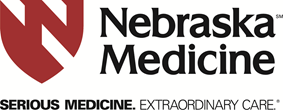
Specimens will also be cultured for aerobic growth.
Some anaerobes will be destroyed by contact with oxygen for only a few seconds. Overlying and adjacent areas of the wound/abscess must be carefully disinfected to eliminate contamination with normal aerobic flora. Ideally, pus or other fluid obtained by needle aspiration is transported to the lab as soon as possible in a capped syringe. Sampling of open lesions is enhanced by deep aspiration using a sterile catheter. Curettings of base of an open lesion are optimal. If irrigation is necessary, sterile normal saline may be used.
Culture of specimens from sites harboring endogenous anaerobic organisms or contaminated by endogenous organisms may be misleading with regard to etiology and appropriate therapy. Gram stain performed. Organism identification is performed when clinically relavant organisms are suspected. Antimicrobial susceptibilities are performed on clinically relevant isolates when appropriate, following mentods (s) recommended by CLSI. Call Laboratory for list of routine susceptibility panels.
See CSFCU, Culture, Cerebrospinal fluid, for CSF specimens
See SYNCU, Culture, Synovial fluid, for all joint fluid specimens. Gram stain not included with this culture. A separate gram stain must be ordered if needed.
Results in 24-72 hours. Preliminary report at 24 hours. Complete reports of cultures with anaerobic bacteria may take as long as 5 days after receipt of culture, depending upon the nature of the organisms isolated. Final report is at 5 days.
|
| OrderCode | OrderName | ResultCode | ResultName | ResultUnits | LOINC | CPT |
| ANACU | AEROBE/ANAEROBE CULT | SDES | Specimen Source | 31208-2 | 87070, 87075, 87205 | |
| ANACU | AEROBE/ANAEROBE CULT | SREQ | Additional Info | 48767-8 | ||
| ANACU | AEROBE/ANAEROBE CULT | CULT | Culture Result: | 41852-5 | ||
| ANACU | AEROBE/ANAEROBE CULT | GS | Gram Stain | 664-3 | ||
| ANACU | AEROBE/ANAEROBE CULT | RPT | Report Status |
| Order Code | Order Description | AOE Code | AOE Name | Answer | Answer code | question type |
| ANACU | AEROBE/ANAEROBE CULT | SDES | Specimen Source | See Full list in Test Directory under Sources for RPS Clients. | List |
| Collection |
Specimens will also be cultured for aerobic growth.
Some anaerobes will be destroyed by contact with oxygen for only a few seconds. Overlying and adjacent areas of the wound/abscess must be carefully disinfected to eliminate contamination with normal aerobic flora. Ideally, pus or other fluid obtained by needle aspiration is transported to the lab as soon as possible in a capped syringe. Sampling of open lesions is enhanced by deep aspiration using a sterile catheter. Curettings of base of an open lesion are optimal. If irrigation is necessary, sterile normal saline may be used.
Culture of specimens from sites harboring endogenous anaerobic organisms or contaminated by endogenous organisms may be misleading with regard to etiology and appropriate therapy. Gram stain performed. Organism identification is performed when clinically relavant organisms are suspected. Antimicrobial susceptibilities are performed on clinically relevant isolates when appropriate, following mentods (s) recommended by CLSI. Call Laboratory for list of routine susceptibility panels.
See CSFCU, Culture, Cerebrospinal fluid, for CSF specimens
See SYNCU, Culture, Synovial fluid, for all joint fluid specimens. Gram stain not included with this culture. A separate gram stain must be ordered if needed.
| Ordering |
Results in 24-72 hours. Preliminary report at 24 hours. Complete reports of cultures with anaerobic bacteria may take as long as 5 days after receipt of culture, depending upon the nature of the organisms isolated. Final report is at 5 days.
| Result Interpretation |
| Administrative |
|
| RPS Interface Information |
| OrderCode | OrderName | ResultCode | ResultName | ResultUnits | LOINC | CPT |
| ANACU | AEROBE/ANAEROBE CULT | SDES | Specimen Source | 31208-2 | 87070, 87075, 87205 | |
| ANACU | AEROBE/ANAEROBE CULT | SREQ | Additional Info | 48767-8 | ||
| ANACU | AEROBE/ANAEROBE CULT | CULT | Culture Result: | 41852-5 | ||
| ANACU | AEROBE/ANAEROBE CULT | GS | Gram Stain | 664-3 | ||
| ANACU | AEROBE/ANAEROBE CULT | RPT | Report Status |
| Order Code | Order Description | AOE Code | AOE Name | Answer | Answer code | question type |
| ANACU | AEROBE/ANAEROBE CULT | SDES | Specimen Source | See Full list in Test Directory under Sources for RPS Clients. | List |